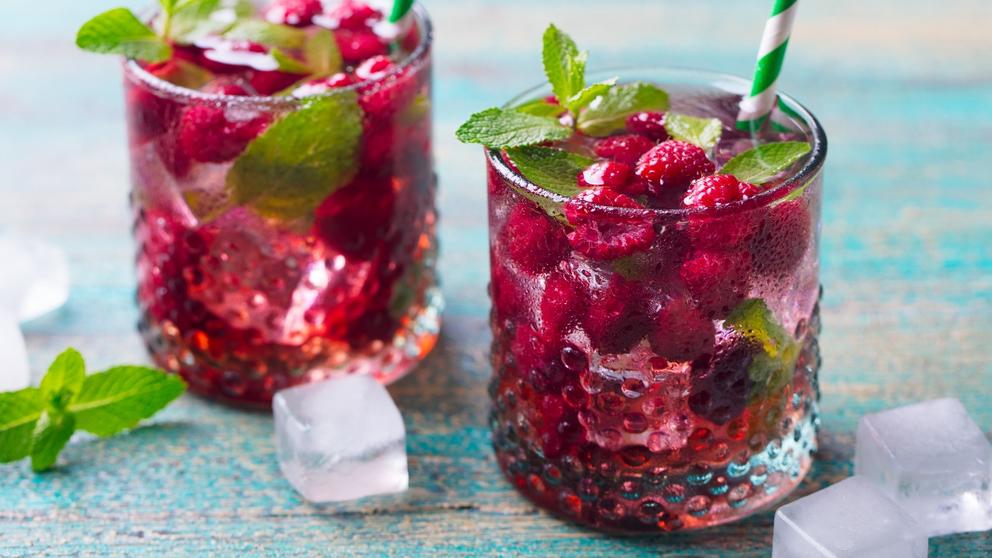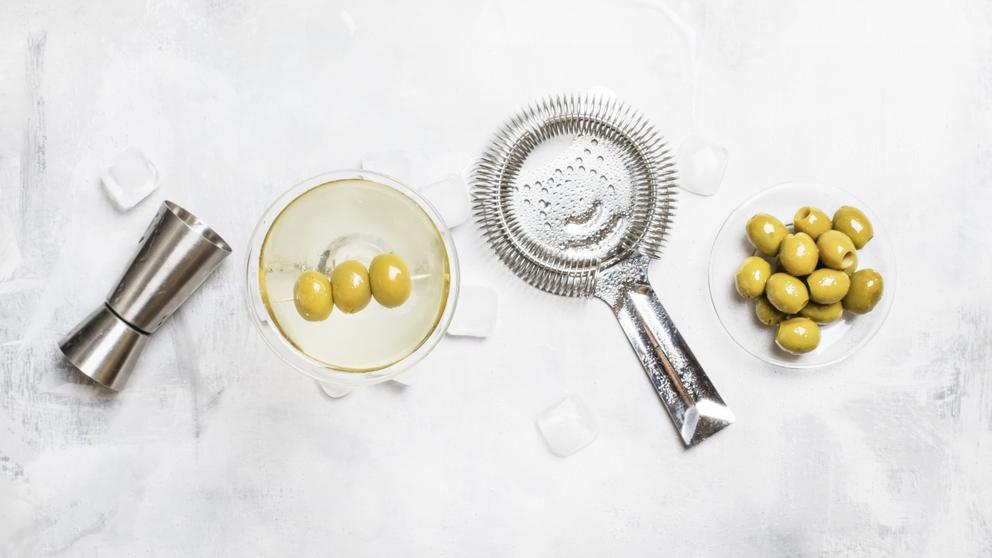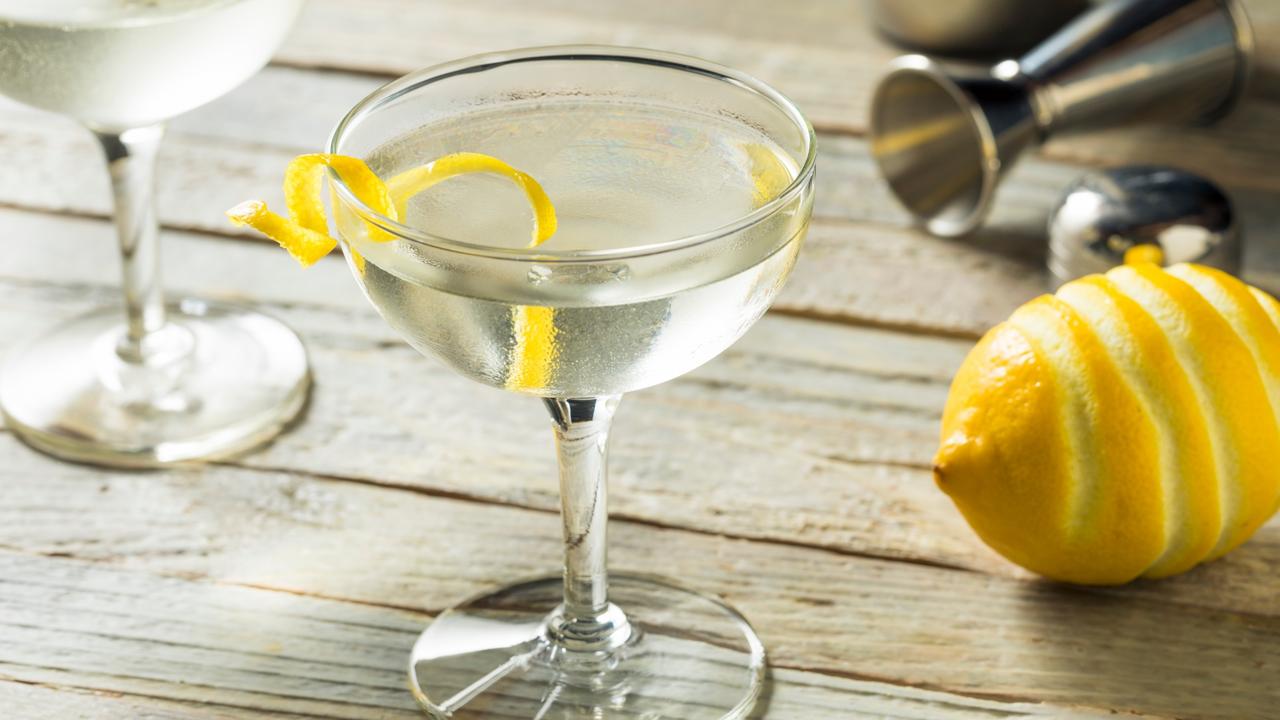From the ‘ice and a slice’ gin and tonic to the orange, cucumber, berries and mint adornments of a Pimm’s cup, garnishes can complement a drink with a medley of extra flavours – as well as being a work of art in themselves when special care is taken. There are many conventions in the making of garnishes, such as the olive for a dry martini or the cherry for a Manhattan, a solid knowledge and practice in the principles and common combinations of ingredients that produce popular results is something that is of great use at the bar. But bartenders also need to be creative and experimental. They should be encouraged to follow their instincts, push back boundaries and see what new innovations they can bring to the bar.
Citrus
Citrus fruits alone offer strong flavours,from sweet to sour, and can be used in various ways. The sliced peel of the fruit imparts citrus oil, which can add to the aroma more than the flavour.
A citrus twist can be made in various ways, using a knife or a peeler, but it is essentially the outer edge of the lemon cut in strips and given a twist to release the citrus oil. Some prefer to just keep it simple with just an offcut from a lemon peel, given a twist, while others more carefully cut long thin strips from the peel that can be wound into a dainty spiral to leave a clear drink, such as a vodka martini, with an elegant finish.
When a piece of orange peel is squeezed and a match or lighter is held to the released oils, a flame is produced and the oils are lightly caramelised on the surface of the cocktail. A simple visual spectacle to start a career in flaring!
For the more tropical, rum or tequila-based cocktails, such as a margarita, daiquiri or caipirinha, a citrus wheel may seem more appropriate. This is a slice of your chosen citrus fruit with a single cut to the centre from the edge, so that the slice can be perched on the edge of a glass to leave a citrus bouquet, as well as a colour of summer. A wedge of lime or orange can be used to create a similar effect.
In recent years wheels of the dehydrated variety have risen in popularity. These impart a more subtle and bitter taste and are practical at the bar because of their longer shelf life and speedier service time. They can be made by heating sliced citrus fruits in an oven at the lowest setting and warming them for up to 5 hours.
Fruits

Cherries can add some bright colour to a cocktail. They are best fresh, rather than artificial Maraschino types. For a sweet Manhattan or a cherry blossom, up to three cherries on a stick can bring out the rich flavours. They can be paired well with amaretto, brandy or Grand Marnier, and can also be used for the many cherry versions of old classics, such as the cherry daiquiri or the cherry cosmopolitan.
Fresh summer berries can add a tasty edge to many cocktails, such as the British modern classic, The Bramble. It is made with gin, lime juice, crème de mure and a garnish of skewered blackberries, perhaps with a raspberry for variety. A lime wheel may be used to contrast the deep, bloody flavours with a citrus tang.
A triangular wedge of pineapple is often well suited to the rim of a cocktail that contains rum, pineapple juice, cream of coconut or lime juice, such as a piña colada, a pineapple martini or a French daiquiri.
By contrast, cucumber is a more mellow and cool taste, and has seen a recent increase in popularity. These can be well used to garnish drinks with gin, vodka, lime and mint, and their easily-carved form opens them up to an almost endless range of creative possibilities, including twists, ribbons end even cucumber flowers.
Savoury

For garnishes, usually plain, green olives are used, such as the Spanish Queen or the Green Baroun. It is important to make sure they are washed first so the oil does not overpower the drink. Olives are the classic garnish for a dry gin martini, and tradition calls for them to be placed on a stick or skewer in odd numbers, usually one or three.
Small white cocktail onions are most famously used for the Gibson, and bring a briny, savoury note to the martini variation.
Herbs & Spices
Mint is a strong taste offering a sweet coolness that finds a comfortable place as a flavouring in many drinks, such as a margarita, mint julep or mojito. Garnishes are easily made from sprigs of mint nestled among ice cubes at the edge of the glass, perhaps next to a lime wheel for a drink with more complex notes.
Other herbs to bring flavour to cocktails include basil, thyme, sage, along with various others. Floral and botanical herbs can add warmth and work especially well with gin.
Spices such as nutmeg, cinnamon and ginger bring warmth to the winter and are traditionally used in mulled wine or cider. They can also be used to spice up an old fashioned or a martini, and work well with rum, fruity and creamy cocktails.
In the burgeoning scene of craft cocktails many new and interesting garnish methods can be noticed, including the use of plastic figurines, foodstuffs, and even complete meals at the top of a glass. The Envoy in Hong Kong serves a whiskey sour topped by a biscuit lolly, while the Scottish Steak Club in Manchester serves Monkey Shoulder Whisky with a garnish of sirloin steak on a cocktail stick. Some of the more outlandish garnish methods may be something of a gimmick, but as we seek out unchartered and exotic taste experiences it is often the unusual and the sublime that hold the greatest appeal.

